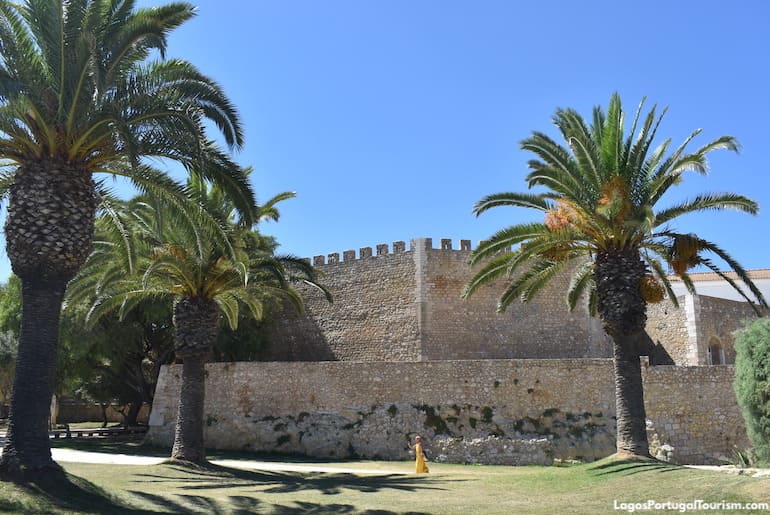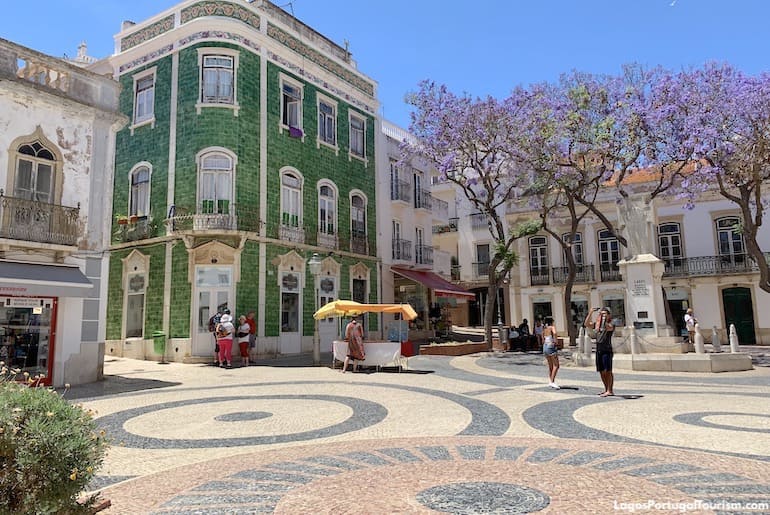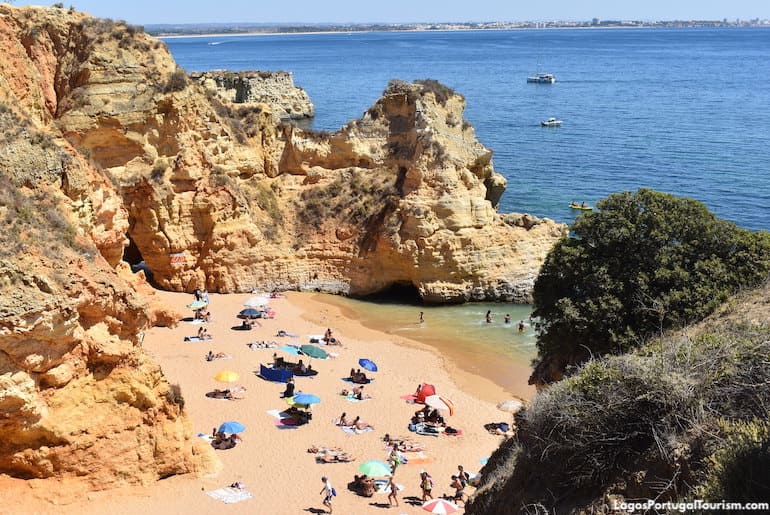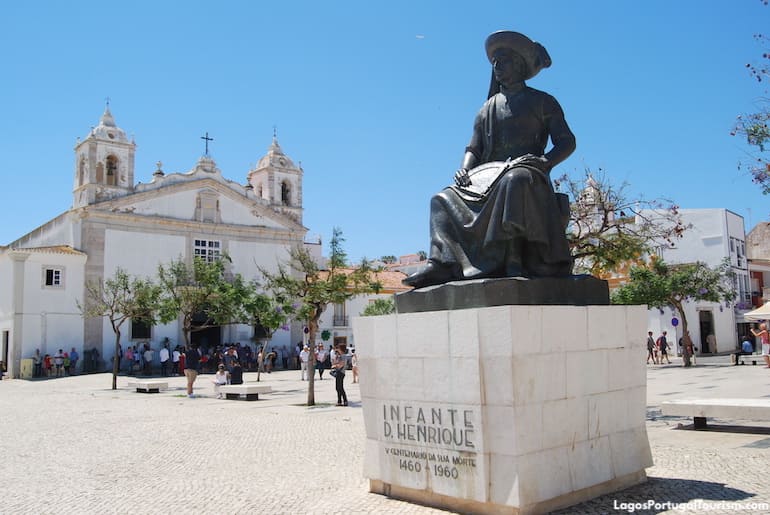
Lagos is one of Portugal’s liveliest historic towns and has some of the country’s finest beaches. In the 15th century, Prince Henry the Navigator made it his headquarters, and it was from here that many ships departed to map the coast of Africa in the hope of finding a maritime route to Asia. The prince’s statue now faces the harbor, in a square where Europe’s first slave market still stands (many of the slaves that arrived here, to be sold to other European empires or to be sent to the Americas, came from present-day Nigeria, whose capital was named by the Portuguese -- Lagos).

Praça Luís de Camões, Lagos
Part of the city’s ancient walls (originally built by the Romans and reinforced by the Moors and then by the governors of the Algarve in the 1500s) also remain intact, but almost everything else is an 18th-century construction or restoration, after a devastating earthquake in 1755. Within the walls are cobbled pedestrian streets with outdoor cafés, restaurants, bars and shops, and whitewashed churches with baroque interiors. On the waterfront is the 17th-century fortress which survived the earthquake, containing a small exhibition about local history and the Age of Discovery. It stands next to a series of beaches, which are the city’s main attraction. They all have soft sand, many feature rocky islets and most have some of the most beautiful rock formations in Europe. A boat trip around this coast, exploring its caves and grottoes, is highly recommended -- it’s often the most memorable Lagos experience for tourists.
Walking around the pretty Old Town is another enjoyable activity, admiring the tiled buildings, the stonework of windows, and the wrought iron balconies. On one of the small squares, Praça Gil Eanes, is the tourism office. The highlight, however, is the Church of St. Anthony, with its rich interior covered with gold brought from Brazil.

Praia do Pinhão, Lagos
You can see all of the sights in half a day. It’s suggested that you dedicate your first morning in town to the cultural attractions and end the day at the beaches in the center (Praia da Batata, Praia dos Estudantes and Praia do Pinhão). On the second day, spend a few hours in Praia do Camilo and Ponta da Piedade, taking photos or on a boat or kayak tour (if you enjoy nude sunbathing, head to Praia dos Pinheiros in between). On the third day you’ll want to relax in Praia da Dona Ana, and shouldn’t leave town without going to the city’s biggest beach, Meia Praia.
A day trip to Sagres (the southwesternmost point in Europe) is another must, and with more days you might also want to visit Algarve’s best-preserved castle in Silves, surf at the beach of Porto de Mós, or experience another relaxing beach nearby, Praia da Luz.

Praça Infante D. Henrique, Lagos
Traveling as a family? The kids will enjoy a day at the Lagos Zoo (you may buy your ticket here: Lagos Zoo Ticket) or, if you have a car, the Slide and Splash waterpark about 30 minutes away.
Finally, take advantage of the many tours and cruises available in and around Lagos. Some go all the way to some of Algarve’s most iconic coastal sights, including the famous caves. Take a look at all the options here: Lagos Cruises and Boat Tours